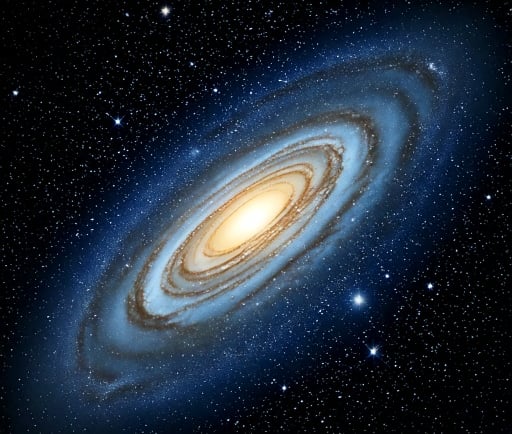The Triangulum Galaxy: A Local Group Marvel


Introduction to the Triangulum Galaxy
The Triangulum Galaxy, scientifically designated as M33, is one of the most captivating galaxies comprising the Local Group of the observable universe. It is the third-largest galaxy in this region, following the Milky Way and the Andromeda Galaxy. The Triangulum Galaxy holds significant interest for astronomers and enthusiasts alike due to its unique characteristics and its relatively close proximity to Earth, approximately 2.73 million light-years away.
Characteristics of the Triangulum Galaxy
This remarkable spiral galaxy exhibits a diameter of about 60,000 light-years, making it a substantial yet smaller counterpart to the Milky Way. Within the structure of the Triangulum Galaxy, we find several notable features, including a prominent central bulge and extensive spiral arms that contain abundant gas and dust. These arms are where new stars are formed, demonstrating the galaxy's ongoing evolution.
The Triangulum Galaxy is estimated to contain roughly 40 billion stars, a figure that speaks to its complexity and grandeur. Additionally, it showcases a rich tapestry of star clusters and nebulae, with the star formation rate being significantly higher than that seen in the Milky Way. Observations have revealed multiple HII regions, where ionized hydrogen atoms reflect the vigorous activity of star formation.
Scientific Significance of M33
The study of the Triangulum Galaxy provides astronomers an invaluable opportunity to analyze galaxy interactions and evolutionary processes. Investigating its structure allows researchers to understand better the dynamics of spiral galaxies. The Triangulum Galaxy is also a critical point of comparison with other members of the Local Group, offering insights into the commonalities and differences among them.
Moreover, the Triangulum Galaxy exhibits a distinct lack of a supermassive black hole at its center, a feature that has puzzled scientists. This absence challenges existing theories about galaxy formation and lends gravitas to the ongoing debate regarding galaxy evolutionary paths. Studies of M33 contribute to our broader understanding of dark matter, galaxy formation, and the nature of the universe at large.
Conclusion: The Future of Investigating M33
The Triangulum Galaxy is poised to remain a focal point in astronomical research for years to come. As technology advances, including more powerful telescopes and improved observational techniques, astronomers will uncover even more mysteries held by this captivating galaxy. The Triangulum Galaxy serves not only as a member of the Local Group but also as a significant player in the greater cosmic narrative that seeks to understand our universe.
